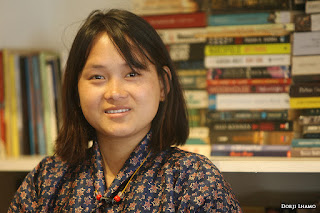The Bhutanese had started hammering coins as far as one and a half centuries back - never mind that our beginnings have been less than honorable. Badness aside, it is clear that we did not know, more accurately - it would appear that we were oblivious that we were hammering coins that bore the names of kings of a foreign country - that of the erstwhile Koch Kingdom.
Bhutanese coins trace its origins to the hammered Koch Narayani. The currency of the erstwhile Kingdom of Koch Bihar was called “Narayani” - after the surname of their ruling dynasty - Narayan. Their currency was current in the entire bordering states of Assam, Bhutan, Nepal, North Bengal, Sikkim and perhaps even as far away as Tibet.
Bhutan is a minuscule country with a population that did not have a need for money - whatever we needed, we bartered for them - if that was not possible, we robbed them from across the border. But what is bewildering is that for a country that did not have any need for money, we went on to produce a stupendous variety of coins. Going by the number of variety of coins in my collection, it points to the possibility that Bhutan may have produced close to two hundred verities of them - produced by 6 regional rulers, including two central authorities seated at Punakha.
Almost all Bhutanese coin varieties have designs and motifs borrowed from the Koch Kingdom. One coin variety that we can claim to be Bhutanese without dispute would be the Sa Maartang. This is also the coin variety with the largest die variations. Derived from the coins in my collection, I have recorded the following main varieties of the Sa Maartang:
Eight distinct renditions and placements of the Bhutanese alphabet Sa on our coins. They form the largest of all other varieties of coins hammered in ancient Bhutan.
Not only that it is the most varied, it appears that the alphabet Sa held intergenerational appeal among the Bhutanese - from the earliest of times. Look at the following coins - we have used the Sa alphabet on our coins from as early as late 1700, late 1800, 1950, 1954 - to all the way to 1979, as the following coins will prove:
Late 1700
Late 1800 : Named "Norzang Phubchen" and issued in silver and bronze/copper. It was supposedly issued by Trongsa Poenlop Jigme Namgyel from his mint said to have been located at Inducholing, Trongsa. I am not very sure of this - from records I have in my possession, he did not have a mint until much later towards his passing. Before that someone else was hammering coins for him from elsewhere out of Trongsa. Thus although we could accept that the coin may have been issued by him, it cannot be said with certainty if it was hammered by him in Inducholing or, whether he issued it as Trongsa Poenlop or as the 48th Druk Desi. The same coin was continued to be issued by Gongsa Ugyen Wangchuck as the 13th Trongsa Poenlop.
This is also among the first hammered Bhutanese coins that bore our own designs and motifs.
Modern milled Sa Maartang of 1950
Modern milled Sa Maartang of 1955 - this one looks almost exactly like the 1950 issue ---- look carefully and you will find that it is different
Modern milled (wrongly spelt) Five Chhertum coin of 1979: This coin was issued in 1979 by His Majesty the IVth Druk Gyalpo - replicating one of our ancient hammered coins depicting the alphabet Sa
So what do you think is the appeal of the alphabet Sa?
Ninety nine percent of motifs/alphabets/letters on our hammered coins are those of the erstwhile Kingdom of Koch. Most obstinate is the word “Ndra”. This word is the conjunct of three Koch Bihari alphabets: “Na”, “Da” and “Ra”, formed to read as follows:
The Koch Kingdom's word "NDra" - formed by the conjunct of three of their alphabets: Na, Da and Ra
You will find the above Koch Bihari word on most of Bhutan's hammered coins - including the earliest known hammered silver coin of Bhutan.
























